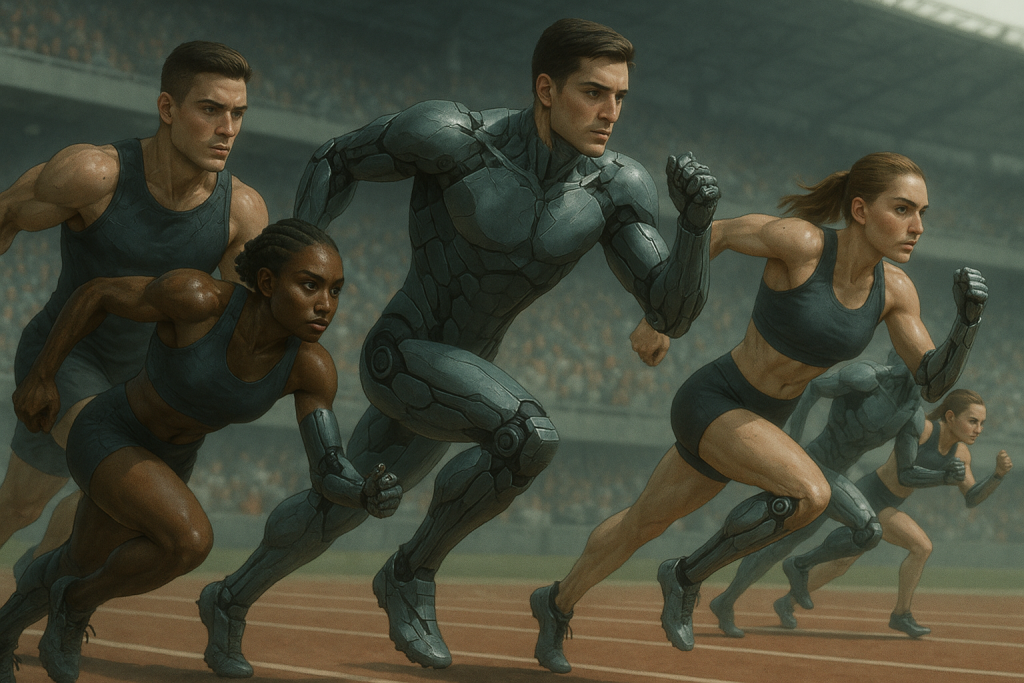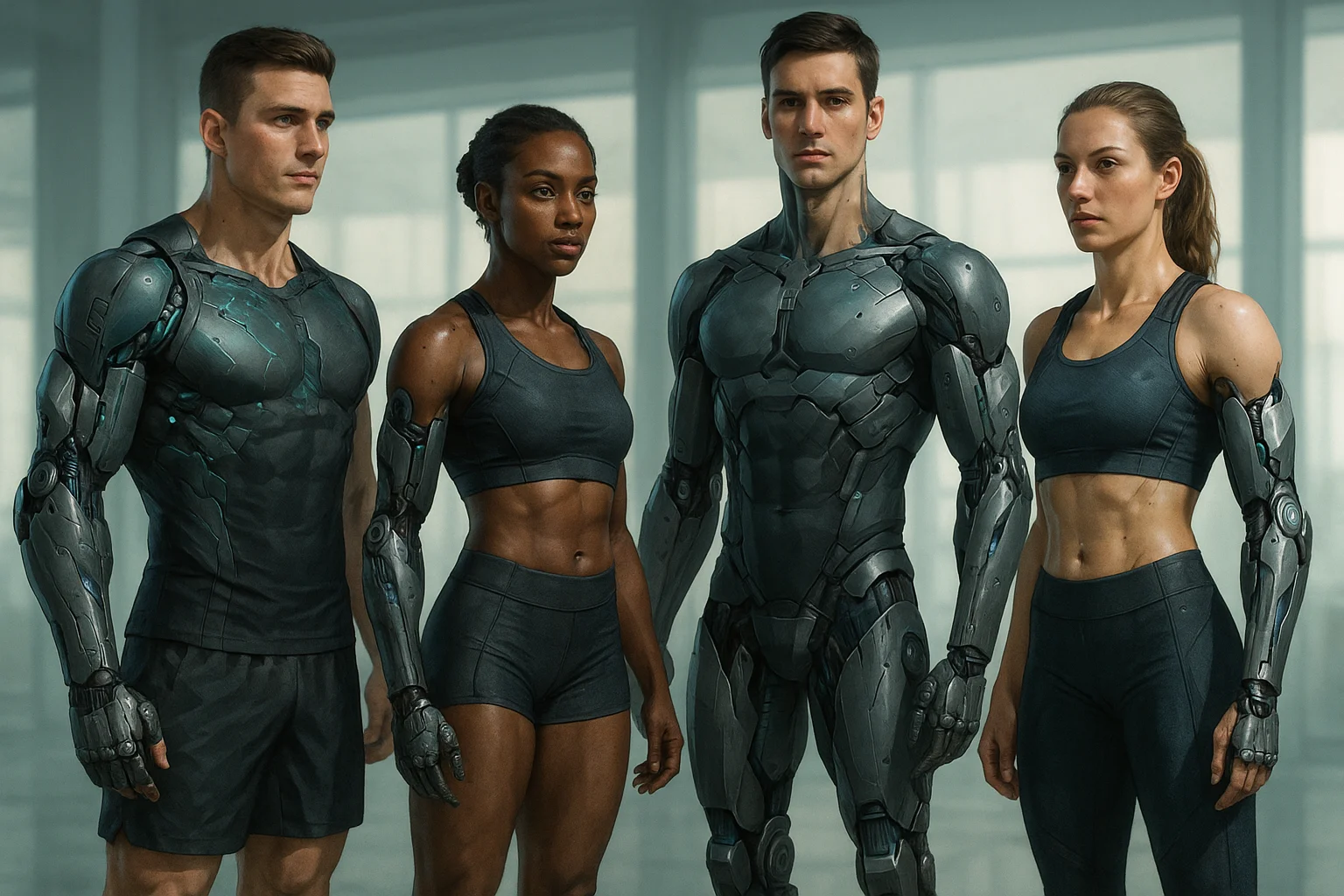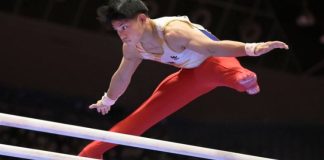In elite sports, the line between natural talent and scientific enhancement is getting blurrier. From gene editing to wearable biotech, bioengineering is pushing athletes to superhuman levels — raising eyebrows, ethical questions, and performance standards all at once.
In this blog, we’re diving deep into how bioengineering is reshaping athletic performance, what it means for the future of sports, and how far we’re willing to go in building the synthetic superhuman athlete.

🔬 What Is Bioengineering in Sports?
Bioengineering is the application of biology, engineering, and technology to enhance or replicate human functions. In sports, this means:
- Genetic modification to boost strength or endurance
- Tissue engineering to recover faster from injuries
- Exoskeletons and prosthetics that outperform human limbs
- Biowearables that give real-time data for peak training
- AI-powered performance analytics
- Neural implants for reflex or cognitive enhancements
What was once the stuff of comic books is now entering training camps and research labs — with real results.
🧬 Gene Editing and Muscle Enhancement
One of the most controversial aspects of synthetic athleticism is genetic manipulation, particularly using CRISPR-Cas9. Scientists are already studying how genes like MSTN (myostatin) — which limits muscle growth — can be “turned off” to allow athletes to bulk up far beyond natural limits.
In animal studies, CRISPR-edited dogs and mice showed massive increases in strength and speed. It’s only a matter of time before the same tech makes its way to human trials — if it hasn’t already, behind closed doors.
🦾 Wearables, Biotech, and Performance Optimization
Forget Fitbits. Today’s biowearables use microfluidic patches, blood oxygen monitors, and AI to monitor hydration, lactate levels, heart rate variability, and even muscle fatigue — all in real time.
These devices optimize workouts down to the rep, reduce injuries, and can adapt training plans daily. For athletes, this is like having a digital coach, nutritionist, and physical therapist rolled into one patch.
🧠 Neural Implants and Reflex Enhancements
Startups are developing brain-computer interfaces (BCIs) that allow athletes to control machines or get feedback with their thoughts. While still early, the potential is massive:
- Faster reaction times
- Real-time decision assistance
- Motor skill reinforcement through electric stimulation
Imagine a tennis player who sees the trajectory of a serve half a second faster than anyone else — all because of a chip in their brain.
🛠 Prosthetics and the “Cyborg Athlete”
Advances in prosthetic limbs now allow amputee athletes to compete at — and even beyond — Olympic levels. Some artificial limbs offer mechanical advantages, like:
- Greater spring energy return
- Reduced fatigue
- Custom geometry for efficiency
The debate rages on: if a synthetic leg outperforms a biological one, is it still a fair game?
⚖️ Ethics: Fair Play or Franken-Athletes?
The rise of the synthetic athlete brings massive ethical challenges:
- Where’s the line between enhancement and cheating?
- Do these techs violate the spirit of sport?
- Will access be limited to wealthy nations or elite clubs?
Organizations like WADA (World Anti-Doping Agency) and the IOC are scrambling to update guidelines. But the tech is evolving faster than the rules.
🏁 The Future: A New Kind of Competition?
As bioengineering advances, we may see two classes of sports:
- Traditional sports, where enhancement is tightly regulated
- Enhanced leagues, where anything goes — chips, genes, and gadgets included
Think UFC meets Silicon Valley — a gladiator arena for the synthetic elite.
🌍 Societal Impact: Beyond the Arena
The synthetic superhuman isn’t just about medals. These advancements will spill into other fields:
- Military: super-soldiers with neural implants
- Medical rehab: restoring motion and strength in patients
- Blue-collar work: exosuits for heavy lifting
- Aging: slowing physical decline with biotech
In many ways, elite athletes are the test subjects for technologies that will affect us all.
🧠 FAQ: Synthetic Superhuman Athletes
Is bioengineering legal in sports?
Currently, most bioengineering enhancements like gene editing or neural implants are banned by athletic organizations. However, wearable tech and some performance analytics tools are allowed.
Can athletes use CRISPR to enhance performance?
Not legally — yet. There’s no public evidence of CRISPR-enhanced human athletes, but underground use is a real concern.
Are exoskeletons allowed in competition?
Not in mainstream sports. They’re mainly used in rehab and training. If allowed, they’d likely be limited to specialized leagues.
Do prosthetics give athletes an advantage?
Sometimes, yes. Some prosthetics can outperform biological limbs, sparking debates over fairness.
What’s the future of synthetic athletes?
Expect hybrid leagues, stricter ethical rules, and more public debate. The tech is coming — it’s just a matter of how we use it.
✅ Final Thoughts
We’re at the edge of something big. Bioengineering is not just changing sports — it’s redefining human limits. The synthetic superhuman athlete might sound like sci-fi, but it’s already here in pieces. The only question is: are we ready for what comes next?







